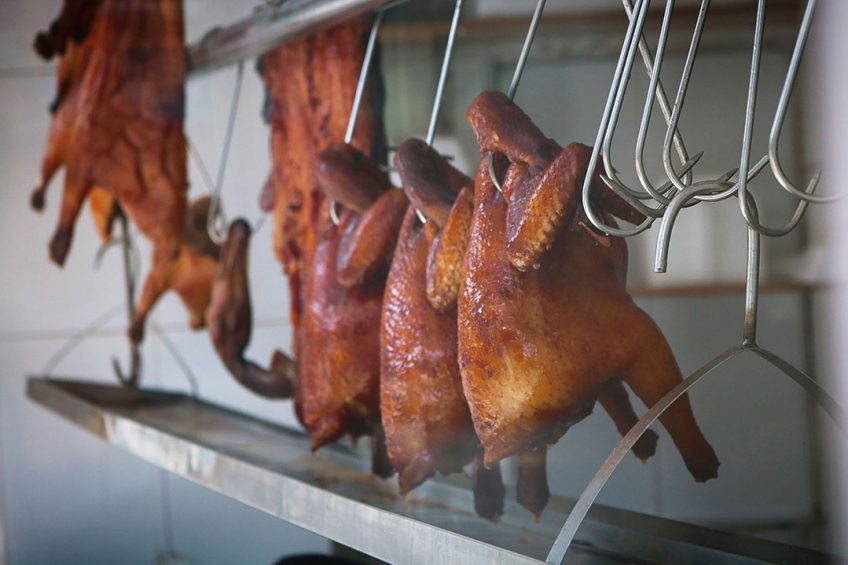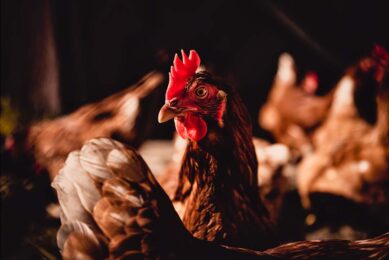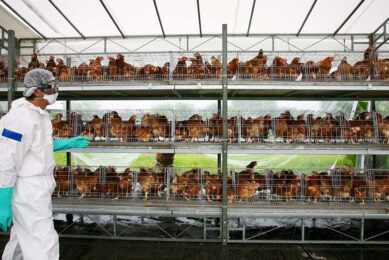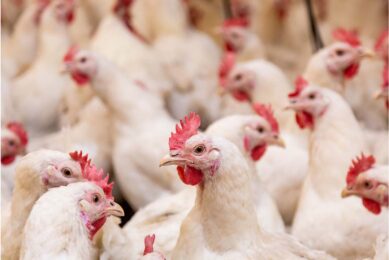China 2020 poultry forecast: ASF, Covid-19 and AI

China’s chicken meat production, consumption, and imports are forecast to increase in 2020 due to the massive pork supply gap created by African Swine Fever (ASF).
However, annual 2020 growth in all 3 categories will be constrained because of production volatility due to reports of:
- recovering pork production;
- a lack of consumer willingness to switch from pork to chicken; and
- production and transportation slowdowns caused by COVID-19.
Chinese poultry production
Due to the ASF outbreak, China’s pork supply is forecast to remain tight throughout 2020, leading to higher pork prices which has resulted in a demand for alternative protein. China’s chicken meat production is therefore forecast to increase to 15.8 MMT in 2020, up 15% compared to 2019. The growth in production of chicken meat will, however, be constrained by several factors:
- The white broiler sector is expected to expand
China imported 84 MT of grandparent birds in 2019 (40% increase from 2018). While New Zealand continues to be the largest source of new live poultry, Poland’s exports to China grew by 200% in 2019. However, Poland’s live chick and poultry access was cut off by China in January 2020 due to reports of highly pathogenic avian influenza (HPAI) in commercial flocks. Potentially offsetting the current loss of the Polish supply, China restored US live bird access in 2020.
Domestic breeding programmes have continued to grow. One of China’s largest poultry companies has reportedly made a breakthrough in white broiler genetics, which were sent to China’s National Poultry Testing Centre for performance testing in September 2019. Should the genetics pass registration, it can supply grandparent stock domestically and internationally. - Perceptions of an early pork recovery weaken chicken meat production
In November and December 2019, pork prices fell and stabilised, which Chinese government officials attributed to a “bottoming out of the swine herd reduction” and “recovery momentum from swine production”. It is claimed that by 2021, China’s hog production would “fully recover”. Broiler prices fell, as a result, while in the first 2 months of 2020, pork prices rose to a record high of RMB59.64/kg (US$8.41) in mid-February. The pork-poultry price dynamic remains volatile.

Also interesting:
Rabobank: Covid-19 and ASF to shake-up world poultry markets
- Consumer willingness to switch to chicken
With high pork prices, many consumers are opting to substitute pork for chicken. But, data shows there have been only incremental increases to chicken meat prices, which have in fact steadily fallen since November 2018. This divergence in pricing dynamics suggests Chinese consumers still prefer pork to chicken and changes to the diet will not happen in a hurry. - Disease concerns
The outbreak of Covid-19 will likely have a noticeable slowing effect on Chinese chicken meat production. The government has imposed travel restrictions, and many businesses have been ordered to stay closed following the Chinese New Year. In addition, transportation restrictions due to coronavirus have disrupted the flow of breeding chicks, animal feed, and live birds for slaughter. Many restrictions have been rolled back, but the industry is still not yet up to speed.

Covid-19 Up-date
What impact is the pandemic having on the global poultry sector and how are they dealing with it.
Poultry imports to China
High domestic pork prices will drive chicken meat imports, which are forecast to increase 16.4% to 675,000 MT in 2020. This increase comes on the heels of a massive 70% increase from 2018 to 2019. While imports will increase, the total amount will be constrained by the same factors constraining production.

Track the movement of Avian Influenza
For everything you need to know about AI, from the latest outbreaks to controls stay up to-date…
Based on normal trade patterns, the height of Chinese meat and poultry imports generally occurs in the last quarter of the year, so the coronavirus may have a minimal effect on the yearly import totals. However, ongoing outbreaks worldwide may exacerbate trade disruptions.
Brazil will continue to be China’s leading supplier in 2020, but will see its market share (over 80% for the last 3 years) shrink due to a minimum pricing agreement its major producers struck with China’s government in 2019, combined with new competition.

Also interesting:
Brazilian chicken exports to China grow 59%, despite Covid19
Chinese poultry exports
China’s chicken meat exports are forecast to slow slightly in 2020 to 375,000 MT due to limited domestic supply and trade disruptions resulting from the COVID-19 outbreak. China’s primary export markets are Hong Kong and Macau. While exports to these markets grew from 2018 to 2019, exports in the first 2 months of 2020 have been down 13%, though this is most likely attributed to Coronavirus-related disruptions.
The source of this information is a USDA report prepared by Abraham Inouye.
Join 31,000+ subscribers
Subscribe to our newsletter to stay updated about all the need-to-know content in the poultry sector, three times a week. Beheer
Beheer








 WP Admin
WP Admin  Bewerk bericht
Bewerk bericht